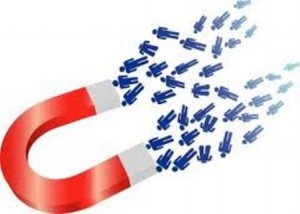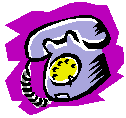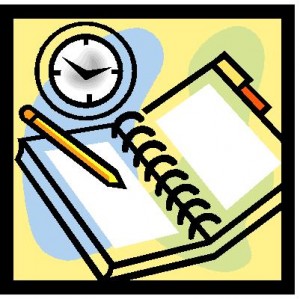5 Steps to Being a Pharmacist Candidate Magnet
 Now that the pharmacy job market is an employer’s market, many of you pharmacy directors (and pharmacy residency program directors) making hiring decisions are flooded with pharmacist resumes to choose from. Now the challenge becomes how to find the right fit in the least time-consuming way, so you can focus on pharmacy operations.
Now that the pharmacy job market is an employer’s market, many of you pharmacy directors (and pharmacy residency program directors) making hiring decisions are flooded with pharmacist resumes to choose from. Now the challenge becomes how to find the right fit in the least time-consuming way, so you can focus on pharmacy operations.
One of the best strategies to saving time in your hiring process is being a candidate magnet. That way you attract the ones that are the right fit, and repel the ones who aren’t. The chances of your new pharmacist hire staying will be higher. Then you won’t have to hire as much.
Let me share with you a few secrets of being a candidate magnet. If you are using these strategies, you will have better luck with identifying the right fit and save yourself headaches of a bad hire.
Here are the first three steps of the 5-step process I teach about being a candidate magnet:
ST EP 1: Clarify what your pharmacy/hospital/organization stands for, what’s important to the role, how the pharmacist would fit into the big picture, and what makes your pharmacy special (Read ideas about figuring this out below).
EP 1: Clarify what your pharmacy/hospital/organization stands for, what’s important to the role, how the pharmacist would fit into the big picture, and what makes your pharmacy special (Read ideas about figuring this out below).
STEP 2: Write an attractive job description and convey what makes you different.
STEP 3: Get the word out (You’ll be learning some of my tips in a future article about this). The first step is one that is glossed over when hiring. Most pharmacy directors who are involved with justifying the position from a financial perspective to get a position approved by administration will spend time on how the pharmacist would fit into the big picture and on the roles and responsibilities. But take time to consider a few important questions (see sample answers below):
1. What are the values and beliefs of my pharmacy?
- Do what it takes – go above & beyond
- Open your heart to others
- Pitch in
- Have fun in your work
- Be creative in decision-making
2. What are the values and beliefs of my hospital/organization?
- Connection and contribution
3. What makes my pharmacy special?
- Every pharmacist has the opportunity to do clinical work
- Everyone is valued for their ideas and has the opportunity to use their talents
4. What is important to this role I’m hiring for? (Include what a typical workday be like, skills they would come with and those that they’d be capable of being trained on, how the pharmacist would interact with other patients and co-workers, and the non-negotiable values) Key Tip: Include the characteristics you want the pharmacist to have. The answers to the first few questions will likely be a part of this answer. Example: Conscientious, strong ethics, heart-centered, going above and beyond, creativity Use the answers to these questions not only in writing your magnetizing job description, but also through your screening process. It is the foundation of attracting the best fit.
Want to learn the rest of the 5 steps, plus learn how to find candidates when you needed them yesterday and weed out the wrong fit quickly?
Register for instant access to the FREE teleseminar “Insider Secrets the Best Recruiters Use to Attract the Right Candidates”
You’ll Learn:
- How to Be a Candidate Magnet – learn how to attract the right candidate, not pursue them
- Secrets to finding candidates when you needed them yesterday
- Buyer Beware! Why the perfect resume may not be the perfect candidate
- Simple steps to weed out the wrong ones quickly & effectively
- How to identify “red flag” candidates
- 3 reasons why most job descriptions actually turn off your best candidates, rather than attract them
Enter your name and email above to get instant access to this free teleseminar!
Pharmacist Retention Starts From Day One
 In the last article of this series, you recognized how important it is to set mutual expectations with your new hire, and to check in with them frequently, especially during the training period. This can save you from misunderstandings down the road, both in how you expect someone to perform actual functions and in the attitude or the pharmacy/clinic/hospital’s culture you’d like them to imbibe. It will ultimately lead to retention of happy employees. Studies show that one main reason why pharmacists leave their positions is because of management. Setting the tone for a strong relationship with your staff from the beginning is key to preventing that. Read on for more tips on setting expectations, how frequently to meet with your new hire, and questions to ask your new hire during the training period to set the stage for their retention.
In the last article of this series, you recognized how important it is to set mutual expectations with your new hire, and to check in with them frequently, especially during the training period. This can save you from misunderstandings down the road, both in how you expect someone to perform actual functions and in the attitude or the pharmacy/clinic/hospital’s culture you’d like them to imbibe. It will ultimately lead to retention of happy employees. Studies show that one main reason why pharmacists leave their positions is because of management. Setting the tone for a strong relationship with your staff from the beginning is key to preventing that. Read on for more tips on setting expectations, how frequently to meet with your new hire, and questions to ask your new hire during the training period to set the stage for their retention.
How frequently to meet with your new pharmacist hire:
Read more
How to Train for Retention so Pharmacists Don’t Leave
The potential government shut down last week made many people affected sweat. With steep federal budget cuts, the issue of having money to hire becomes one to be concerned about. Even if you are not affected by federal funding, budgets is the name of the game in this economy. Having to hire someone new can be costly, so retention is always the first place to look for a solution. Retaining good pharmacists starts from the very beginning-hiring and training.
One of the most common phrases I hear from pharmacy directors/managers is “I don’t want to spend a long time training a new employee.” As a result, training becomes something many pharmacy managers fly through quickly to get a new pharmacist up to speed. Yet it is the most crucial element to your new employee’s long-term success and ultimately the retention of your new hire.
Here are a few tips to implement when you train someone new:
- Set expectations – between both you and your new hire. This means not only you setting expectations for them, but them expressing their expectations and how they prefer to be managed. Determine together what the definition of success in their role would look like.
- Discuss the pharmacy’s values, vision, and mission. This is a step many pharmacy directors skip. But it is an important step for key reasons. One of the main reasons why an employer feels compelled to stay at a job is if values, vision, and mission are in alignment. Things may not be perfect, but an employee is more likely to put up with things they are dissatisfied with if they feel they are aligned with your pharmacy’s values & are empowered by your vision/mission.
 Conduct a personality assessment such as the Insights Model, so you recognize not only how they may tend to relate with others, but also their natural strengths. For example, an introvert may not openly share their successes with you, but they may be just as outstanding as an extrovert counterpart. Insights into how your pharmacy staff thinks, acts, and works can give you an edge to managing them smoothly.
Conduct a personality assessment such as the Insights Model, so you recognize not only how they may tend to relate with others, but also their natural strengths. For example, an introvert may not openly share their successes with you, but they may be just as outstanding as an extrovert counterpart. Insights into how your pharmacy staff thinks, acts, and works can give you an edge to managing them smoothly.- Find a way to communicate regularly with your new hire. Set expectations for how they can maintain channels of communication, including as a team (ie, staff meetings) and individually. Include when, how frequently, what can be brought up. For example, you may set the stage early on that when someone brings a problem, they will always come with three potential solutions. This way you don’t get constant complainers.

In an upcoming blog article, you will learn some of the best questions to ask a new hire to see how they are doing during the training period….and how to use that valuable information to retain your pharmacists.
If you have temporary coverage needs between finding out when someone is leaving and training a new hire, explore your options for IHS/tribal-experienced pharmacists to cover in the interim. Don’t waste your money on inconsistent levels of pharmacists who take more than necessary effort to train and manage.
Misunderstood Expectations, to a Pharmacy Everyone Wants to Work For
One of the main reasons why pharmacists leave their jobs is because they have an unsupportive team environment. Pharmacy managers & HR managers, here is one solution to that:
Create a Code of Honor. Create a “code of honor” specifically for the pharmacy. This is something that isn’t talked about a lot, but is in essence the things (said or unsaid) that a team works according to. If there is not an established code of honor for the team, an individual usually goes by his/her own code of honor to make decisions. This is where you can start having problems. Read more on why it matters, what examples of a code of honor are, and how to create a team environment everyone wants to be a part of. Read more